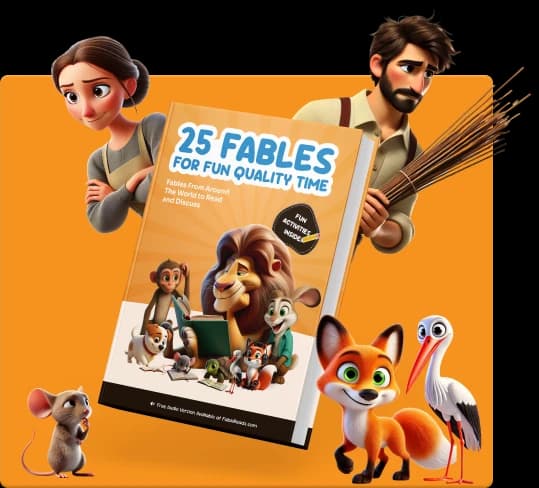Aesop | Greece
Der Hirtenjunge und der Wolf
Ein Hirtenjunge ruft wiederholt „Wolf!“, um den Dorfbewohnern einen Streich zu spielen, aber als ein echter Wolf kommt, glaubt ihm niemand.

Es war einmal in einem kleinen Dorf ein Hirtenjunge, der auf die Schafe des Dorfes aufpasste. Jeden Tag führte er die Schafe auf eine nahegelegene Wiese, damit sie Gras fressen konnten, während er sie von einem Hügel aus beobachtete.
Der Junge fühlte sich gelangweilt und einsam, weil er keine anderen Kinder zum Spielen hatte. Eines Tages dachte er sich einen Streich aus, um sich zu amüsieren. Er rannte ins Dorf und schrie laut: „Wolf! Wolf! Ein Wolf greift die Schafe an!“
Die Dorfbewohner hörten die lauten Rufe des Jungen, ließen ihre Arbeit stehen und eilten herbei, um ihm zu helfen. Doch als sie auf die Wiese kamen, sahen sie keinen Wolf, und die Schafe waren sicher. Der Junge lachte und sagte, er habe sich die Geschichte nur ausgedacht. Die Dorfbewohner waren verärgert und schimpften mit ihm, weil er ihnen ohne Grund Angst gemacht hatte.
Ein paar Tage später spielte der Junge denselben Streich. Er rannte wieder ins Dorf und schrie: „Wolf! Wolf! Ein Wolf greift die Schafe an!“ Die Dorfbewohner kamen erneut zu Hilfe, aber es gab wieder keinen Wolf. Sie waren diesmal sehr wütend und sagten dem Jungen, er solle aufhören, über den Wolf zu lügen.
Eines Tages, als der Junge die Schafe beobachtete, kam ein echter Wolf aus dem Wald und begann, sich den Schafen zu nähern. Der Junge hatte große Angst und rief: „Wolf! Wolf! Diesmal greift wirklich ein Wolf die Schafe an!“
Aber die Dorfbewohner kamen nicht, um zu helfen. Sie dachten, der Junge lüge wieder, weil er sie zuvor hereingelegt hatte. Der Wolf griff die Schafe an, verletzte viele und ließ die anderen davonlaufen.
Der Junge war sehr traurig und verstand plötzlich, dass seine Lügen den Verlust der Schafe des Dorfes verursacht hatten.
Kaufen Sie ein Buch und helfen Sie dabei, Fabeln in die Welt zu bringen
Genießen Sie 25 ausgewählte Fabeln fürs Leben, gedruckt. Jeder Kauf unterstützt kostenlose Geschichten für Kinder, Eltern und Lehrer weltweit auf fablereads.com

















